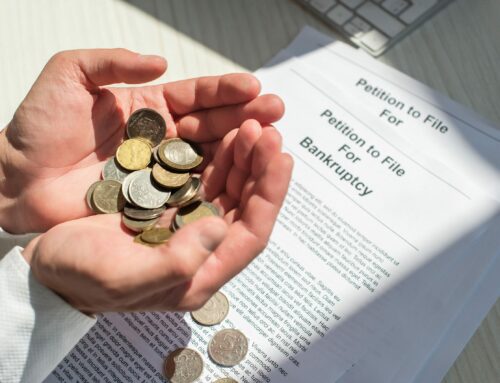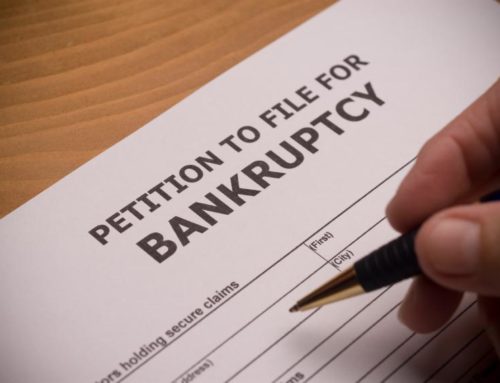Getting a car loan is the fastest way to buy a car. There are numerous options for auto loan applications that offer the best financing solutions and interest rates. It may be used for both new and old cars. Car dealers are helping people, especially first-time car buyers, to fill out and submit all the paperwork needed for guaranteed loan approval. They offer the most affordable loan options with a low-interest rate and down payment. To qualify for a car loan application, the credit history of the car buyer will be thoroughly checked. Company owners and businessmen are some of the people who can easily qualify for auto loans. Since one’s credit report and financial capacity to acquire a new car will be checked, a person with a bad credit score may not be eligible for car loans.
In the field of business, there are inevitable cases of financial struggles and monthly income losses. These kinds of situations may lead to the inability to pay the financial obligations of the owner. Thus, filing for bankruptcy might be your only option to solve the problem. This will allow you to pay back all your debts and have a fresh start after bankruptcy. This is a great opportunity to rebuild your credibility. Consulting a lawyer with expertise and experience in bankruptcy law will be able to help you.
A bankruptcy filing does not always mean declaration and liquidation of all the assets that you have acquired. In the same way, it does not mean that you are already exempted from all your financial obligations and credit problems. If you have an existing auto loan, there are chances that you might lose your car, depending on the type of bankruptcy chapter to be filed. The most common types of bankruptcy are Chapter 7 and Chapter 13. If you want to keep your car, you will have to pay off the car loan regardless of the bankruptcy chapter that you will choose.
 The duration of the Chapter 7 bankruptcy process usually lasts approximately four months. In this chapter, the debtor must hand in all the nonexempt assets. These are the properties that are not protected from the creditor. The borrower’s assets will be sold by the bankruptcy court. The funds collected will be used to settle your existing debts. Your bankruptcy attorney can explain this in more detail.
The duration of the Chapter 7 bankruptcy process usually lasts approximately four months. In this chapter, the debtor must hand in all the nonexempt assets. These are the properties that are not protected from the creditor. The borrower’s assets will be sold by the bankruptcy court. The funds collected will be used to settle your existing debts. Your bankruptcy attorney can explain this in more detail.
If you are determined to keep your car amidst bankruptcy, you need to know if you will be allowed to protect all the equity. Each state in the country has specific rules with regards to the exemption of a specific amount of equity in a vehicle. For example, the equity of your car amounts to $12,000 and the vehicle exemption in your state is only $6,000. The bankruptcy trustee will be the one to sell your car, then use the funds to pay off any loan. The remaining amount will be given to the creditor.
If equity is granted, and if the car is not under a loan, then you can save it from being surrendered. On the other hand, if you can protect the equity but the car is still on an auto loan, (or if the car is used as collateral for other loans), you have three possible options. You need to choose whether to reaffirm the debt, redeem the car for value, or surrender your car.
The first option is to reaffirm your debt. If you do not want to give up your car, you have to negotiate with the lender through a reaffirmation agreement. You both need to agree with a reorganized monthly payment plan following the Chapter 7 bankruptcy rules. You have to pay the remaining loan amount you owe in full. If you decided to stop the payment, the creditor has the power to repossess the car and sell it. They have the right to collect the remaining balance from you after selling the car.
The next choice is to redeem your car for its value. In cases wherein the car has a lower value compared to the debt amount, you have the option to keep it. In return, you have to pay the lender the same amount equivalent to the value of the car in a lump sum. This is only applicable if you have cash on hand. If none, there are other options for car financing solutions to choose from; however, they usually offer high-interest loan rates.
The last option is to simply surrender your car. Once your car is turned in, you are no longer responsible for any charges or payments. This will grant you freedom from your loan debts and other financial obligations. In Chapter 7, all the remaining loan balance will be discharged.
In filing Chapter 13, you are obliged to allot your disposable income to the lenders within a period of three to five years. Your disposable income refers to the balance after paying the approved expenses. You can use this chapter to repay various kinds of debts including auto loans. Under this chapter, you have the option to choose from paying the loan outside the plan, paying the loan within the plan, or simply surrendering your car.
If you agree with the existing loan terms and conditions, you may continue the payment outside of the plan as normal. On the contrary, you also have the option to compensate for the loan amount within the plan. Settling the payment under this chapter will allow you to extend the balance and the payment period. If your car loan payment is set on a 3-year plan, you can extend it to the maximum 5-year period. If the current loan is already beyond 2 and half years when the bankruptcy is filed, cramdown may be applicable. This term refers to the restructuring of the payment plan. There is a possibility of reducing the principal amount to the car value and decreases the loan rate interest down to 5%.
It is difficult to let go of any of your acquired assets like cars. As much as possible, you are willing to do whatever it takes to save all your properties amidst the hardships caused by the bankruptcy. For legal assistance and inquiries, do not hesitate to consult with our trusted bankruptcy lawyers at Thomas E. McIntire & Associates, LC. Call 304-232-8600 today.





